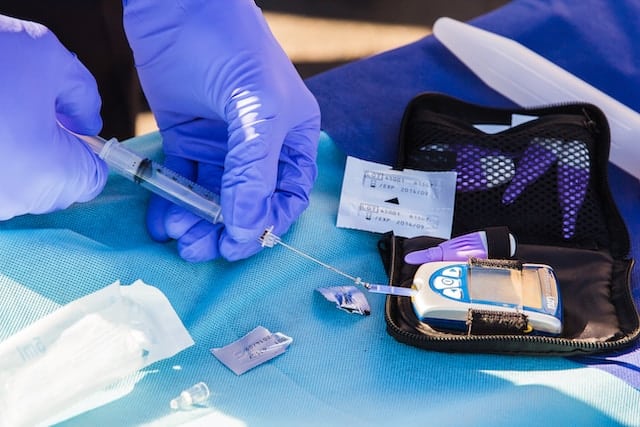High and Low Blood Sugar Symptoms
If you’ve been feeling shaky, parched, or just plain off lately, it’s worth paying close attention to high and low blood sugar symptoms. These red flags can sneak up on you, especially if you have diabetes or if your levels vary throughout the day. Staying aware helps you avoid bigger problems down the road, like nerve damage or serious heart trouble. Below, you’ll learn what signals to watch for, how to track your glucose, and ways to protect your health.
Know Signs of High and Low Blood Sugar
Your blood sugar level (the amount of glucose in your bloodstream) can run higher or lower than normal for many reasons, including diet, activity, stress, or diabetes. Hyperglycemia refers to blood sugar that’s too high, while hypoglycemia is when levels are too low. Both can be harmful if ignored.
- Normal blood sugar ranges vary by person. For some people, normal blood sugar levels stay below 100 mg/dL before meals or under 140 mg/dL two hours after eating.
- Keeping your glucose in check is an essential aspect of blood sugar management.
- According to the Cleveland Clinic, approximately 1 in 10 Americans has diabetes, making blood sugar a big deal for many individuals (Cleveland Clinic).
Spot Key Hyperglycemia Signs
Hyperglycemia can creep up slowly. You may not notice symptoms until your blood sugar rises above 180 mg/dL or even 200 mg/dL (Mayo Clinic). Initial symptoms can feel mild, but they can worsen if you don’t take action:
- Excessive thirst or frequent urination
- Blurred vision or headaches
- Constant fatigue and difficulty focusing
- Slow-healing cuts or frequent infections
Sometimes people won’t experience strong signs until their levels reach 250 mg/dL or higher (Cleveland Clinic). If this happens often, chat with your doctor to review your routine and possibly adjust medications.
Look for Hypoglycemia Clues
Hypoglycemia tends to show up when glucose drops below 70 mg/dL, though some individuals can feel symptoms at slightly higher or lower levels (American Diabetes Association®). Common warning signs include:
- Shakiness, nervousness, or irritability
- Dizziness, weakness, or sudden fatigue
- Sweating or feeling clammy
- Light-headedness and difficulty concentrating
When your blood sugar dips this low, many experts recommend the 15-15 Rule (American Diabetes Association®). You take 15 grams of fast-acting carbs (like glucose tablets or juice), wait 15 minutes, then check your glucose again. Repeat until your levels rise above 70 mg/dL. If you’re curious about how meals affect your numbers, post-meal blood sugar levels are a useful indicator.
Use Helpful Blood Sugar Charts
One of the best tools you can have is a reliable chart to map your glucose levels throughout the day. That’s where blood sugar charts come in handy. These charts outline target ranges before and after meals, helping you spot problems early.
Below is a general overview of typical targets for many adults. Keep in mind that your personal goal range may differ based on your health plan:
| Condition | Before Meals (mg/dL) | About 2 Hours After Meals (mg/dL) |
|---|---|---|
| Normal | 80–130 | <180 |
| High | >130 | >180 |
(Source: MedlinePlus)
Daily monitoring provides clues on how your body handles certain foods, activity levels, and medication. It’s also a powerful way to share accurate info with your healthcare team.
Prevent Serious Complications
Ignoring high or low blood sugar for too long can lead to serious health issues. Chronic hyperglycemia can damage your nerves, eyes, and kidneys (Mayo Clinic). Untreated hypoglycemia, on the other hand, can cause confusion, seizures, or unconsciousness (source).
Fortunately, you can slash these risks by:
- Checking your blood sugar more often, especially if you’re feeling off
- Balancing your meals with protein and fiber, aiming for stable glucose
- Staying active, like taking short walks or doing gentle workouts
- Reviewing your meds and dosages regularly with your healthcare provider
It may take some time to figure out the right combination of diet, exercise, and medication. But once you do, you’ll feel more confident about keeping your levels within a healthy range.
Remember, a little awareness goes a long way toward catching high and low blood sugar symptoms early. If you notice unusual changes in your energy, mood, or appetite, test your levels or reach out to your care team. Small steps now can make a big difference in how you feel tomorrow.








Leave a Reply